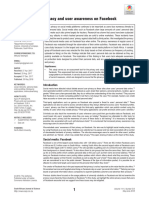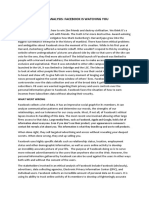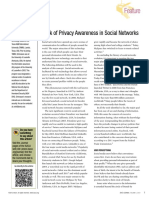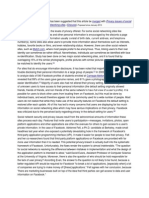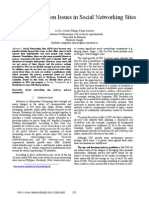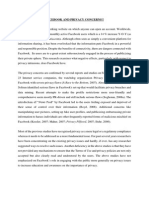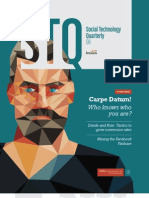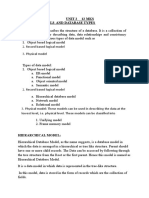0% found this document useful (0 votes)
69 views34 pagesSma Lab Manual
The document discusses conducting a case study on the social media platform Facebook. It describes Facebook's history and growth, privacy issues related to personal data collection and use, and potential solutions to strengthen privacy protections such as opt-in policies and non-profit social networks.
Uploaded by
Shreeyash GuravCopyright
© © All Rights Reserved
We take content rights seriously. If you suspect this is your content, claim it here.
Available Formats
Download as PDF, TXT or read online on Scribd
0% found this document useful (0 votes)
69 views34 pagesSma Lab Manual
The document discusses conducting a case study on the social media platform Facebook. It describes Facebook's history and growth, privacy issues related to personal data collection and use, and potential solutions to strengthen privacy protections such as opt-in policies and non-profit social networks.
Uploaded by
Shreeyash GuravCopyright
© © All Rights Reserved
We take content rights seriously. If you suspect this is your content, claim it here.
Available Formats
Download as PDF, TXT or read online on Scribd
/ 34






